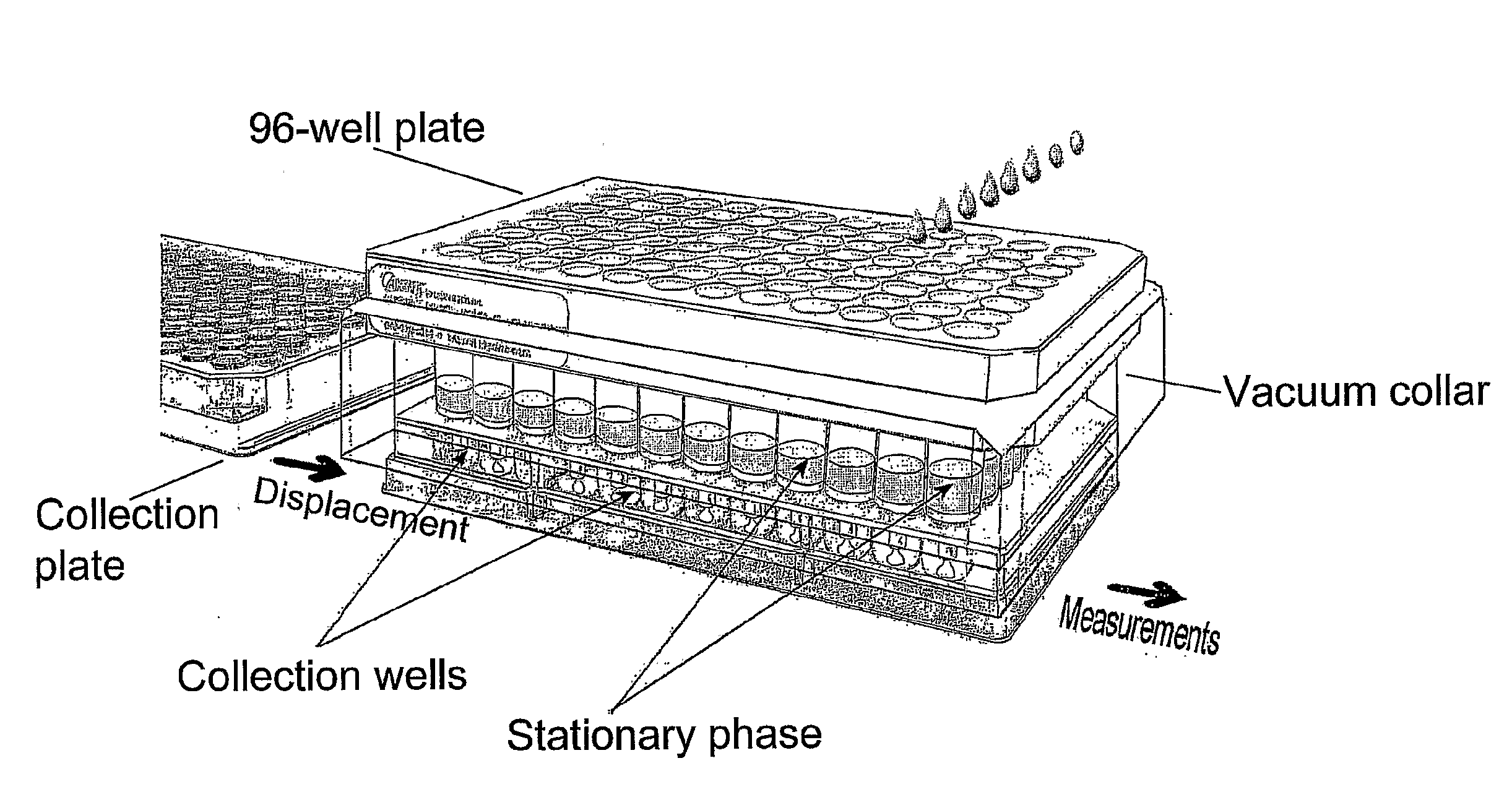Method of Screening a Biological Target for Weak Interactions Using Weak Affinity Chromatography
a technology of affinity chromatography and biological target, applied in chemical libraries, combinational chemistry, component separation, etc., can solve the problems of not being able to detect weak binders on a high throughput basis, difficult to screen weak-binding drug candidate molecules in practice, and not being able to achieve high throughput detection. , the effect of virtual screening methods
- Summary
- Abstract
- Description
- Claims
- Application Information
AI Technical Summary
Benefits of technology
Problems solved by technology
Method used
Image
Examples
Embodiment Construction
[0008]The present invention relates to a method of screening a biological target for transient weak interactions between the target and a library of ligands. The inventive method comprises the steps of providing a composition of a biological target; providing a plurality of stationary phases from said composition; transporting a plurality of ligand compositions to said stationary phases, thereby establishing contacts between said ligands and said biological targets; collecting, downstream of said stationary phases, zonal retardation information for each ligand; and finally selecting ligands exhibiting weak affinity to said target, wherein said ligands have dissociation constants (Kd) in the range of about 0.01 to about 10 mM. The selected ligands having transient bindings to the biological target may undergo further studies regarding their binding behaviour, for example with NMR analysis, with the purpose of identifying one or several lead compound(s). The method typically involves ...
PUM
| Property | Measurement | Unit |
|---|---|---|
| dissociation constants | aaaaa | aaaaa |
| dissociation constants | aaaaa | aaaaa |
| dissociation constants | aaaaa | aaaaa |
Abstract
Description
Claims
Application Information
 Login to View More
Login to View More - R&D
- Intellectual Property
- Life Sciences
- Materials
- Tech Scout
- Unparalleled Data Quality
- Higher Quality Content
- 60% Fewer Hallucinations
Browse by: Latest US Patents, China's latest patents, Technical Efficacy Thesaurus, Application Domain, Technology Topic, Popular Technical Reports.
© 2025 PatSnap. All rights reserved.Legal|Privacy policy|Modern Slavery Act Transparency Statement|Sitemap|About US| Contact US: help@patsnap.com



